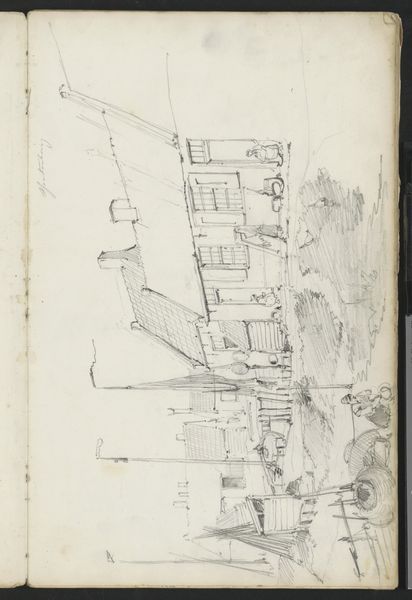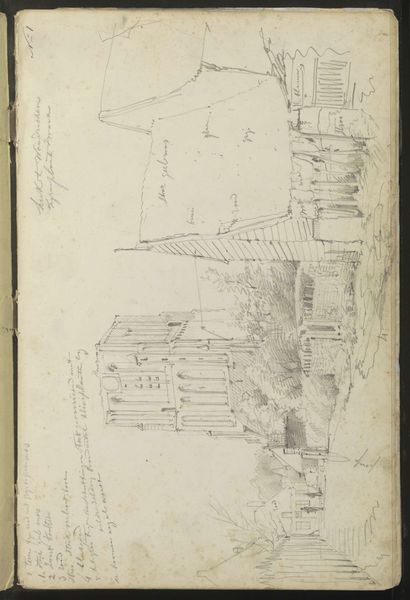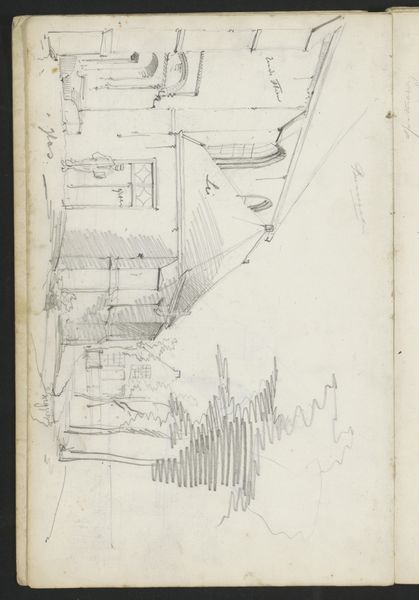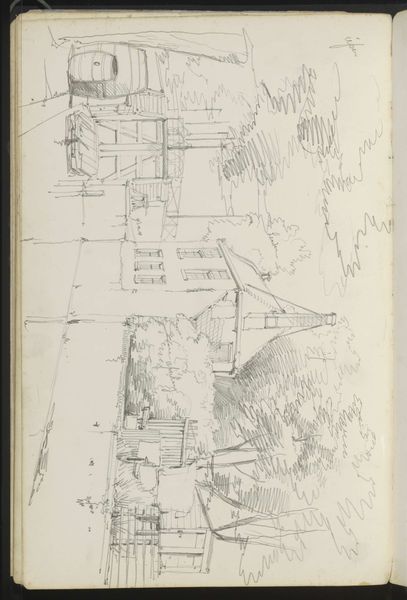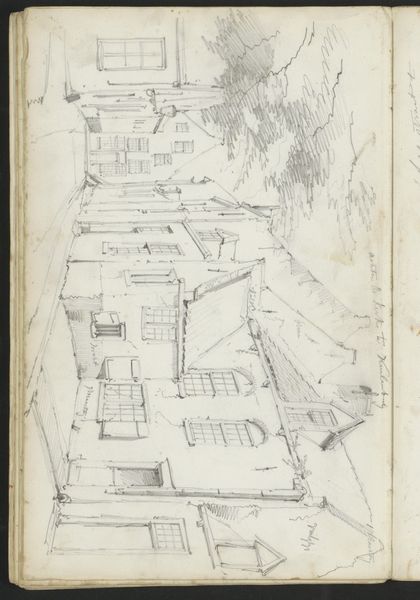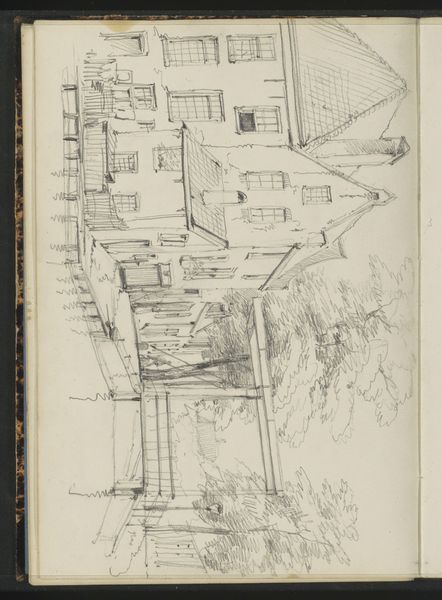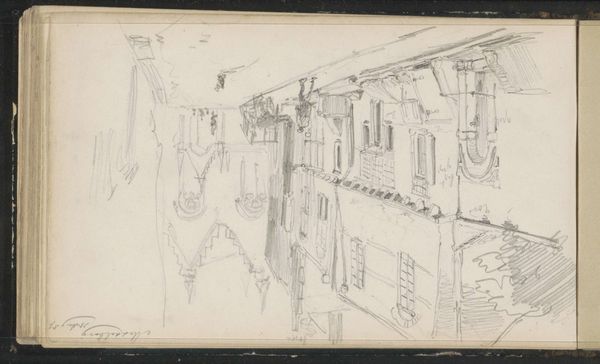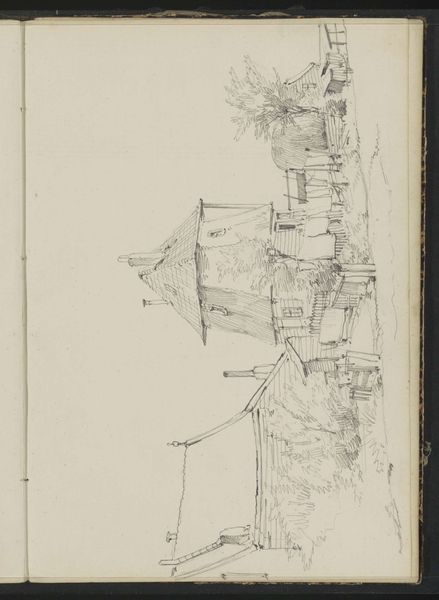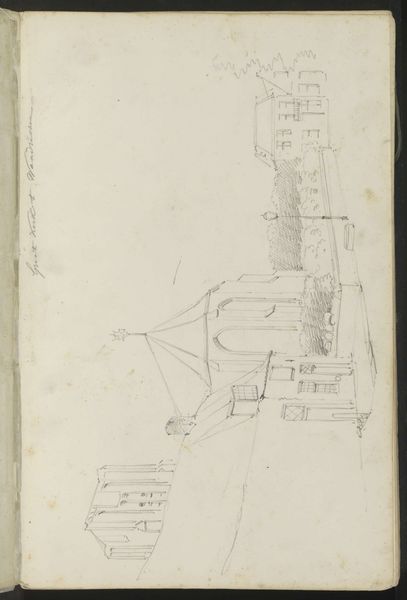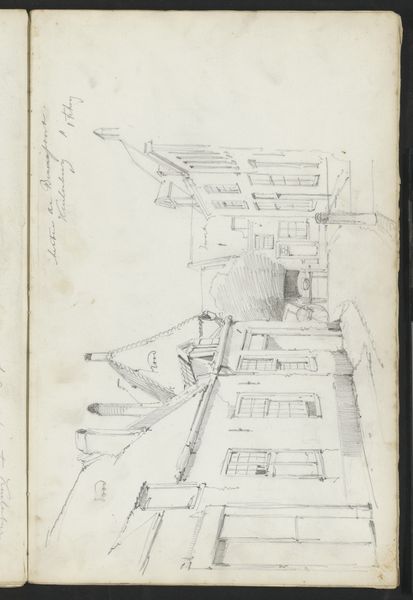
drawing, paper, pencil
#
drawing
#
quirky sketch
#
dutch-golden-age
#
sketch book
#
incomplete sketchy
#
landscape
#
paper
#
personal sketchbook
#
sketchwork
#
pen-ink sketch
#
pencil
#
pen work
#
sketchbook drawing
#
cityscape
#
storyboard and sketchbook work
#
sketchbook art
#
realism
Copyright: Rijks Museum: Open Domain
Curator: Willem Koekkoek’s "Straat met figuren te Spakenburg," dating from 1849-1895 and held here at the Rijksmuseum, offers us a glimpse into a Dutch street scene rendered in pencil and pen. It appears to be part of a sketchbook, given its preliminary nature. Editor: It feels incredibly immediate. The roughness of the lines, the almost frantic energy in the shading. You can feel Koekkoek quickly trying to capture the scene. The heavy pencil work and light inking seem rushed, perhaps drawn on site? Curator: Precisely. Sketchbooks provide invaluable insights into the artist's process and the historical contexts that shaped their vision. Spakenburg itself, a small fishing village, retained a unique cultural identity, its inhabitants clinging to traditional dress and customs. One wonders how Koekkoek, situated within broader discourses of nationalism and cultural preservation, engaged with representing this specific community. Editor: I'm struck by how the buildings lean and jut out—it is less about architectural accuracy and more about conveying the close proximity, the way these structures shape the inhabitants lives. How do you see class playing into this image of labor within a confined space? Curator: That's a crucial point. Koekkoek's choice of subject matter inherently comments on the social and economic fabric of the village. The sketch, in its focus on vernacular architecture and the ordinary lives playing out within its spaces, can be interpreted as an empathetic engagement with working-class lives and a commentary on issues related to local agency and community. Editor: The use of pencil, especially, underscores the accessibility, not only of the subject but also of artistic production itself. Pencil meant relative freedom, but perhaps this points towards a reliance of industrial production that defines it against handmade artistic materials. Curator: The dialectic of the drawing's status, torn between an individual's labor and broader cultural context, speaks to an ever present issue in understanding an image within an individuals sketch and as something presented by this institution. Considering those tensions seems critical to me in considering not just *what* he depicted, but *why* and for *whom.* Editor: For me, the incomplete nature, the sense of work still in progress, emphasizes the material, emphasizing it as a social and economic entity, more akin to product than high art. I wonder if it really does speak to class anxiety as an art object? I hadn’t previously considered it this way!
Comments
No comments
Be the first to comment and join the conversation on the ultimate creative platform.

